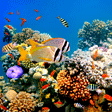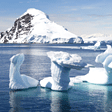- Home >
- Our Actions >
- Ambassador report
5
Comments
UAE's biodiversity |
|---|
|
by Arushi Madan | 18-05-2016 01:30
|
|
UAE's particular environment – hot and dry – greatly limits the country's biodiversity richness. UAE has 3 major varieties of ecosystem: 1) desert ecosystem (80% of the country's area) 2) mountain ecosystem (2.6% of the country's area) and 3) coastal and marine ecosystem (2390 km of which belong to the Arabian Gulf and Sea of Oman). However, being a meeting point between the Indo-Asian and Afro-European regions, it has relatively rich fauna and flora, with 731 plant species, 48 mammal species, 440 bird species, 40 varieties of coral reefs, 500 fish species, 4 turtle species and many marine mammal species, 109 varieties of algae, 67 amphibian and reptile species. Invertebrates are very prolific in the tidal rocky zone and especially in creeks (2636 species have been identified in addition to 15 varieties of spiders). In 2013, the number of declared protected areas reached 22, covering 6841 km2, including 5 areas listed under the Ramsar Convention. Biodiversity protection, such as the conservation of the endangered Arab Falcon and the protection of camel diversity, plays an important role in UAE's cultural legacy. Fisheries and tourism represent important parts of the UAE economy these services aim to investigate the opportunities in building a local greener Emirate through a better understanding of carbon and coastal ecosystem services and their potential contribution to climate change mitigation efforts. Measures to Enhance Implementation of the Convention The new (and first) Biodiversity Strategy of the United Arab Emirates (2014-2021) includes a series of main orientations and national goals in line with the 'Emirates vision 2021' in addition to the Emirates' Strategy for Green Development, the National Strategy for Coastal and Marine Environment, the Biosafety Strategy and the Aichi Biodiversity Targets. The main orientations focus on: 1) mainstreaming biodiversity in all economic and social sectors 2) reinforcement of knowledge sharing and capacity building for upgrading and addressing biodiversity management 3) improvement of biodiversity status through habitat protection, genetic diversity and restoration of degraded ecosystems 4) reducing pressure on marine and terrestrial biodiversity and 5) enhancing regional and international cooperation on biodiversity cross-cutting issues. Twenty-one national targets with action-driven and outcome-oriented measures, grouped under 5 thematic areas, have been set out. The new biodiversity strategy includes particular engagements on capacity building, communication and public awareness, resource mobilization, and on a national knowledge sharing platform in line with the CHM of the Convention on Biological Diversity. Progress on the implementation of the strategy and action plan will be monitored and assessed and findings will be reported by representatives from each Emirate. Actions taken to achieve the 2020 Aichi Biodiversity Targets According to national records, forest areas increased from 245 ha in 1990 to 317 ha in 2010, and protected areas are increasingly implemented in line with the Aichi Biodiversity Targets. Significant progress in implementing some conservation activities, particularly national targets, related to the reduction of pressure on biodiversity. For instance, UAE uses modern methods of wastewater treatment in more than 60 facilities to combine advanced science and engineering in the deployment of efficient technologies to treat large volumes of wastewater on a continuous basis. Support mechanisms for national implementation (legislation, funding, capacity-building, coordination, mainstreaming, etc.) Huge efforts are paid by the UAE to conserve biodiversity. Several official decrees have been produced locally or at the federal level by the UAE to conserve biodiversity and its habitats. In addition, the UAE has ratified biodiversity and environment-related international conventions and signed regional agreements that enhance and conserve biodiversity. Significant progress has been made with regard to furthering CBD implementation in response to the objectives set out by 'Emirates vision 2021'. It incorporates instruments such as: • Various legislative acts adopted by the UAE for the conservation of biodiversity.
Efforts of the UAE in Biodiversity Conservation
Despite being regarded as an unfertile desert, the UAE like most of the other GCC countries hosts a unique and remarkably adapted fauna and flora. Several causes are threatening the biodiversity in the UAE. These include natural coastal development and urbanization, as well as over-exploitation of natural resources (over-fishing, over-hunting, overgrazing and water extraction) that are linked with the tremendous population increase and changes in lifestyle. Over the last few decades, the UAE has lost most of its big fauna and several others are at the edge of extinction. Huge efforts are paid by the UAE to conserve biodiversity. Several official decrees have been produced locally or at federal level by the UAE since its creation in 1971 to conserve biodiversity and its habitats. In addition, like most countries, the UAE has ratified biodiversity and environment related international conventions and signed regional agreements that enhance and conserve biodiversity. Fifteen protected areas have been declared officially in the UAE. EWS-WWF-Emirates Wildlife Society in association with WWF EWS-WWF was born out of a need to protect biodiversity in key sites across the emirates including species and ecosystems of concern in the region raise awareness on the high UAE Ecological Footprint and contribute to policy and institutional framework to address environmental issues.
Outside of the big cities and the hustle-bustle of the UAE's urban areas lie a variety of different unique and delicate ecosystems, bursting with biodiversity such as plants, mammals, fish and birds. Being a coastal country, our oceans also hold valuable life forms that are part of the UAE's history and heritage. Species work at EWS-WWF aims to understand the lives, threats and needs of these vulnerable/endangered species in the mountains and at sea, in hope of increasing conservation efforts towards protecting them. Marine Turtle Conservation Project : 4 years. 4 countries. 75 tagged turtles. One shared vision: a safer, healthier future for marine turtles in our region. Marine turtles are a key species in the marine ecosystem, yet the Hawksbill turtle is listed critically endangered by the IUCN (International Union for Conservation of Nature) and adequate nesting sites are a rarity due to man-made threats. Marine turtle populations around the globe are threatened with extinction, having been heavily over-harvested and having their habitat increasingly destroyed by mankind. With increased coastal development, urbanisation and industrialisation, the global population of marine turtles is in decline. Nowadays, critical measures are urgently needed to safeguard the few remaining turtle nesting, feeding and breeding sites on beaches and at sea as well as their migratory pathways. As little was known on turtle migration patterns or feeding grounds, the project 'Marine Turtle Conservation' was created . It started in 2010 & wrapped up in November 2014. To date, it is the largest initiative in the region to understand marine turtle behavior and conservation needs in the Arabian Gulf. This was done by gathering data from 75 Hawksbill turtles tagged with satellite transmitters, sending a signal every time they surfaced to breathe. Raise the awareness of marine turtle conservation needs at regional levels Understand the post-nesting migrations and biology of marine turtles using satellite tracking. Identify the foraging grounds of endangered marine turtles and linkages between nesting and feeding population assemblages. Share tracking data and findings to relevant authorities and contribute to the development of a regional marine turtle conservation plan Integrate these conservation initiatives within international conservation agreements on marine turtles and national programmes.
|
 
|
|
|










 Previous : BIOLOGICAL DIVERSITY IN THE UA...
Previous : BIOLOGICAL DIVERSITY IN THE UA...









5 Comments
Thanks for uploading on time Arushi! and also for your in-depth cover of the species. It's good that the UAE government and environmental organizations are working closely to enhance protection of wild species. Take care!
Posted 24-05-2016 11:19
Wow Arushi, thanks again for your intensive research on the diversity of UAE. I am personally intersested to know about species living in deserts, since my nation do not have those kinds of regions I was hoping more to hear about that topic as well. However, I am delighted to receive a very specific information on marine species. Thanks for reporting and have a great day!
Posted 23-05-2016 17:16
The authorities of the UAE are proactive & responsible towards sustaining the fragile eco-system of the region. I'm sure that they will achieve their vision portrayed for years to come. Thanks Arushi for reporting the same.
Posted 20-05-2016 17:52
Your detailed report on the biodiversity of UAE was very interesting. I feel so much more closer to learning about the environment in UAE. Thanks for the report. Looking forward to read more of your writeups in the future.
Posted 20-05-2016 03:59
This is an exhaustive write-up on UAE biodiversity. Obviously, the UAE government is playing its part to conserve the biodiversity of the country and it is commendable. However, more can still be done to preserve these fauna for future generation. Thank you Arushi for bringing this up.
Posted 18-05-2016 19:30